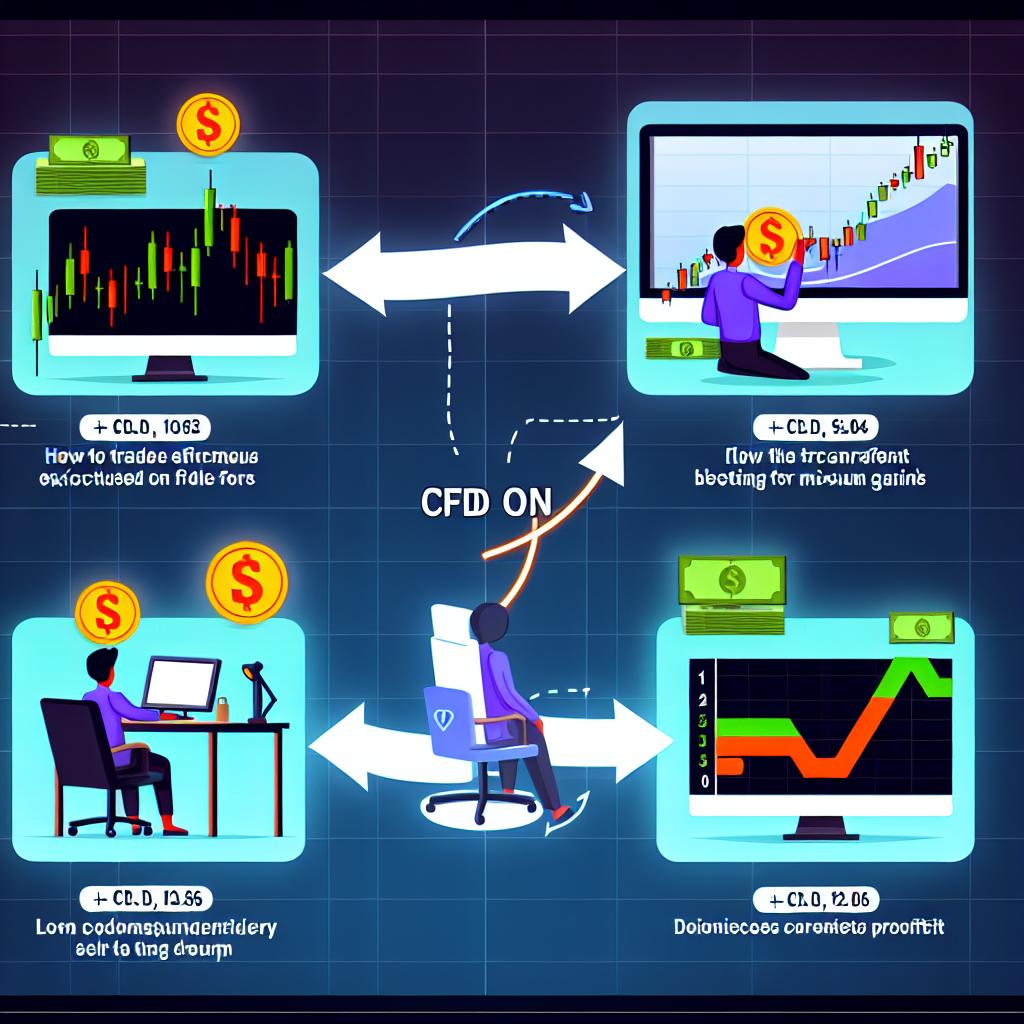
Contracts for Difference (CFDs) serve as financial derivative products, allowing traders to engage in speculation concerning the price movements of a variety of assets. This includes foreign exchange (Forex) currency pairs, all without the necessity of owning the underlying asset. Meanwhile, Forex trading involves the exchange of one currency for another, occurring within a decentralized global market that operates 24 hours a day, five days a week.
The process of trading CFDs on Forex revolves around predicting the movement of values between pairs of currencies, such as predicting how the euro will fare against the U.S. dollar (EUR/USD). When a trader engages in this form of trading, the gain or the loss they realize is directed by the difference between the purchase and sale prices of the currency pair involved. Should the trader accurately predict the market’s direction, profits are accordingly realized.
The structure of CFD trading provides a framework where traders are not constrained by ownership of the currency itself, allowing them to speculate freely on fluctuations in values dictated by external economic conditions and market sentiment.
One substantial advantage of engaging in CFD trading is the provision of leverage. Leverage permits traders to initiate larger positions than their actual account balance would normally accommodate. The potential for amplified gains exists with the use of leverage, making it an attractive proposition for many. Furthermore, the CFD market offers traders access to a wide array of currency pairs, thus providing significant opportunities for diversification and flexible trading strategies. The ability to short-sell CFDs further extends these opportunities by allowing traders to potentially profit from declining market conditions.
Additionally, the structure of CFDs offers various benefits over traditional forms of trading. The flexibility inherent in CFDs facilitates ease of access to diverse market conditions and trading environments, appealing to traders of varying experience levels.
However, the very leverage that acts as an advantage in CFD trading also contributes to significant risks. Given the amplification of potential profits by leverage, losses can similarly be magnified, sometimes exceeding the initial investment. This necessitates the implementation of effective risk management strategies to safeguard against undue financial exposure. Moreover, the inherent volatility of the market can provoke rapid price fluctuations, increasing the risk of significant loss if not properly managed.
Correct risk management is crucial. Traders should be aware of the potential for loss, employing strategies such as setting stop-loss orders to minimize exposure and losses.
Traders looking to optimize their outcomes in CFD and Forex trading should focus on several key strategies:
Analysis and Research: Integral to successful CFD trading on Forex is a comprehensive approach to market analysis. Methods employed include technical analysis, which concentrates on the examination of price charts, and fundamental analysis, aimed at understanding economic factors that influence currency valuation. Accurate analysis can provide traders with the insight needed to tailor their strategies effectively.
Risk Management: The importance of implementing robust risk management strategies cannot be overstated. Setting appropriate stop-loss orders and determining position sizes compatible with one’s risk tolerance are strategies employed to minimize potential losses. Diversifying across multiple currency pairs also serves to reduce exposure to volatility specific to any single currency pair.
Practice with a Demo Account: Prior to engaging in live trading, it is strongly recommended that traders utilize demo accounts. These accounts enable traders to familiarize themselves with CFD platforms and hone their trading strategies before exposing themselves to financial risk. Practical experience gained in a risk-free environment can significantly enhance a trader’s understanding and confidence.
Stay Informed: Given the influential nature of global and political events on currency markets, being well-informed is essential. Tracking these events requires regular consultation of economic calendars and financial news sites, both of which provide crucial updates and valuable insights.
Engaging in these strategies effectively can considerably enhance a trader’s ability to navigate the complexities of CFD and Forex trading.
For those contemplating entry into the world of CFDs and Forex trading, there are additional considerations to take into account. Understanding the regulatory environment of these financial markets is crucial, as regulations can vary significantly across different jurisdictions. Traders should ensure that they are fully aware of the legal landscape and select brokers that adhere to strict regulatory standards to safeguard their investments.
The psychological aspect of trading also merits attention. Maintaining a disciplined approach, managing emotions, and adhering to planned strategies without deviation are essential for enduring success in the often tumultuous realm of financial trading.
Essentially, a successful trader in the world of CFDs and Forex is one who combines technical proficiency, careful planning, and strategic foresight. Each of these components should work in harmony to foster a balanced approach to trading, aiding individuals in navigating the challenges and opportunities present in these dynamic markets.
In conclusion, for those keen to delve deeper into the intricacies of Forex and CFD trading, a wealth of resources are available through financial news portals, online broker platforms, and educational materials. Acquiring a solid understanding of these investments is imperative before deploying real capital into the market, ensuring informed decision-making processes align with individual financial goals and risk appetites.
This article was last updated on: June 9, 2025